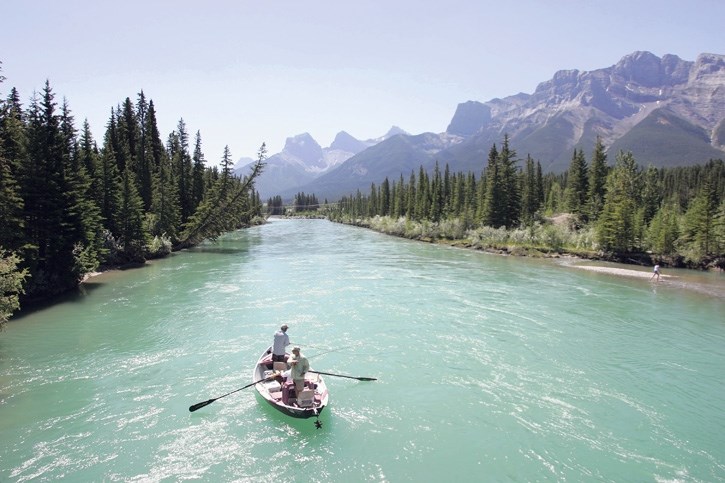BOW VALLEY – In the Rockies, the story of the late spring/early summer snowpack is a tale of two worlds.
In the lower elevations and the valley bottoms, the snow melted away early, while in the higher elevations it has only just begun to melt.
“There’s still lots of snow up high, but not much down low,” said snow hydrologist John Pomeroy, director of the University of Saskatchewan’s Centre for Hydrology which conducts much of its research in the Rockies.
With a cool and wet month of May depositing more snow up high, the upper elevation snowpack is just beginning to melt now that warmer temperatures have arrived. At most places at higher elevation and closer to the continental divide, the snowpack is a bit higher than average.
At lower elevations down to the valley bottoms the snowpack was well below average, and below average at the middle elevations.
“The melt has shaped up strangely, into two snow worlds – the higher elevations have plenty to melt and lower elevations melted out early with little to contribute to streamflow,” Pomeroy said.
Nearly a week of 20 C weather in the middle of March at mid to lower elevations caused much of the lower snowpack to melt at that point in time.
The Rockies did not have a particularly snowy winter, Pomeroy added. The early season snowfall that surprised many in September did remain in the higher elevations, but melted away lower down.
At different monitoring sites stretching from Kananaskis north to the Bow Summit area, the snowpack showed to be average or below by the end of the winter.
At the Skoki Lodge backcountry area site the winter snowpack height was “spot on average,” while at Sunshine Village the snowpack was 75 per cent of average and has began to melt as of the beginning of June. At the Helen Lake site accessed from the Icefields Parkway and situated at an elevation of 2,500 metres, the snowpack was still 1.5 metres deep at the end of May.
“Warmer temperatures at higher elevations are just happening now,” Pomeroy said at the beginning of June.
Consequently, the river levels as the Bow reaches Calgary were low to average until the end of May when they jumped to almost twice the average for this time of year due to the rapid melt of the late-lying high-elevation snowpack with the recent hot weather.
With so much snow remaining in the alpine, the risk of flood is still present if the region was also to be hit by long and sustained rainfall, he said. It would take a significant downpour to make that happen, but the potential is there.
“The flooding would mainly be from the rainfall and it would take approximately 100 millimetres of rainfall or more to generate that,” Pomeroy said. “The late-lying and now rapidly melting snow could easily contribute to that flooding, much as it did in 2013.”
The situation is different in the north of the province and right into the Yukon and Alaska, where un-seasonally warm temperatures and a dry winter resulted in a lack of a winter snowpack.
“There were crocuses growing in the Yukon in April,” Pomeroy said. “And Inuvik hit a record high of 8 C on Easter Sunday in April. Normally at that time of year I have to wear my big parka up there.”
Recent seasonal predictions from Environment Canada are for normal precipitation for June, July and August, he said, but with a 60 per cent probability of above normal temperatures.
“That suggests continued rapid snowmelt and perhaps more forest fires and lower summer streamflows in the mountain west,” he said.




